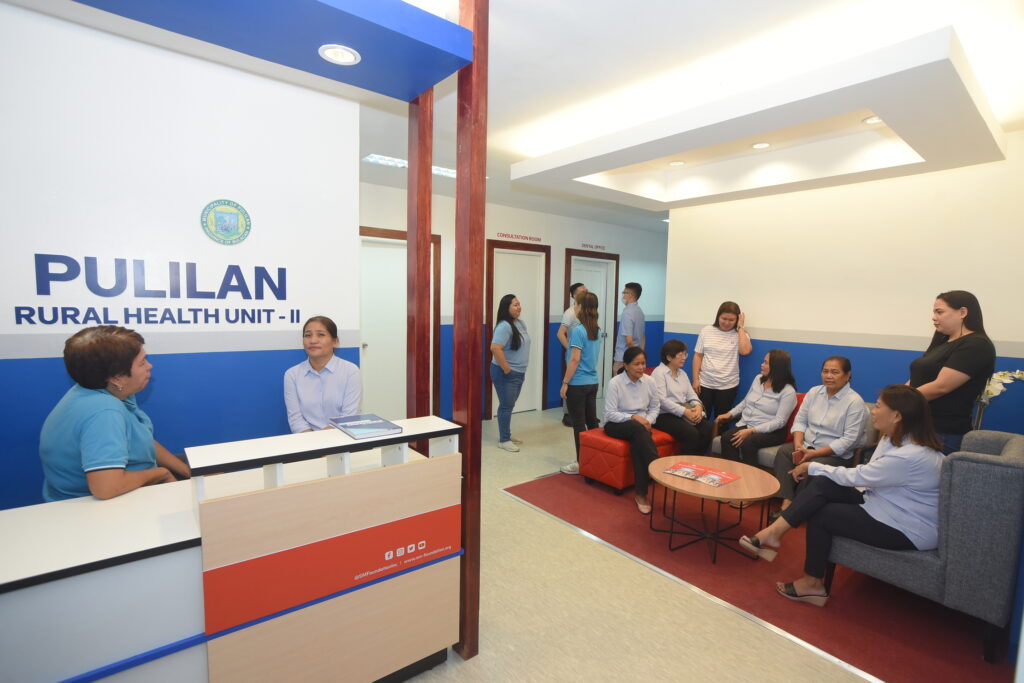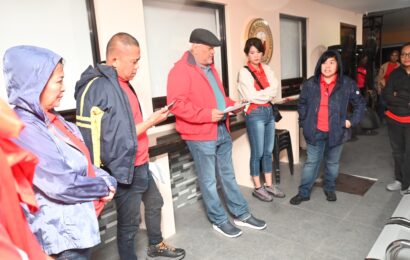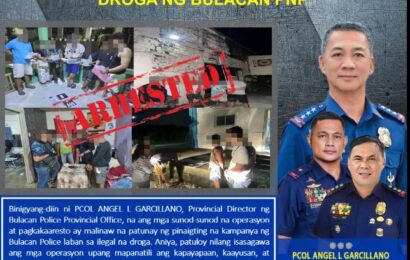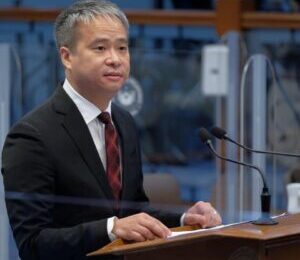
SMALL as they seem, local community health centers hold a significant impact in improving Filipinos’ lives.
According to the 2017 National Demographic Health Survey (NDHS), Filipinos continue to count on public medical facilities, such as public hospitals, rural health units, or barangay health stations, for their healthcare treatments.
The NDHS showed that the majority of parents whose children had fever, diarrhea, or acute respiratory infection sought advice or treatment from public healthcare facilities. These facilities are also the most common source of contraceptives. Beyond this, public health facilities have been an active platform for vaccination and other key health programs.
But despite their vital role, the facilities are hindered from functioning at their full potential by a multitude of challenges, such as deficiency of facility infrastructure, and lack of strategic medical equipment and supplies.
Providing services that the community deserves
Just north of Metro Manila stands the Rural Health Unit (RHU) III of Baliwag City. The facility is one of the RHUs recently upgraded by the SM group through the SM Foundation’s partnership with UNIQLO Philippines.
The RHU serves 300 patients daily (on average). The majority are from low-income households from 8 barangays, where three are the biggest in the city. The number does not include COVID-19 vaccinations, family planning services, medicine and prescription refills, and requests for medical and death certificates.
“Bukod sa may mga anay, ang mga pintura ay nagba-bakbakan. Ang mga pinto at ceiling namin ay sira or may mga crack. Kailangan na talagang i-renovate dahil marami nang sira,” RHU III midwife Rebecca Galves shared the previous state of their center.
Aside from the damage that comes from daily use, the RHU’s layout wasn’t optimized to fit documents, medical tools and equipment, and necessary furniture. Patients had to sit close to each other during checkups and consultations, limiting workers’ efficiency and patients’ privacy and safety.
“Dahil masikip dito sa loob, hindi namin kayang i-accommodate lahat ng pasyente. Unang una, hindi dapat maging crowded sa pasilidad dahil tayo ay nasa pandemic pa—kailangan pa rin ng social distancing. Kaya ang mga pasyente namin ay kadalasang naghihintay sa initan sa labas. Kapag umuulan, nababasa sila,” she recalled.
“Bukod sa marami kaming kagamitan at documents na hindi na magkasya sa mga cabinets, sa isang kwarto, tatlong kama pa ang nakalagay. At dahil masikip, minsan, ang waste products ay nasa ilalim na ng kama. Hindi namin maibigay ang komportableng kapaligiran at ang serbisyong gusto sana naming maihatid,” she added.
For her, the renovation of the center done by the SM Foundation could not have come at a better time. Now, she can finally deliver the medical help she has long hoped to give the community—a service people deserve.
“Ngayong narenovate na ang Center, nakakatiyak kami na gaganda pa lalo ang kalidad ng serbisyo. Unang una, komportable na ang lugar kung saan maghihintay ang mga pasyente. Bukod pa dito, mai-hihiwalay namin ang mga pasyente base sa kalagayan at pangangailan nila. Higit pa rito, pag bumisita ang mga pasyente, mararamdaman nilang para silang nasa makabagong pasilidad dahil malinis at maaliwalas na dito ngayon,” she described the new RHU III.
“Kagaya ng sinasabi namin sa mga pasiyente, mahalaga ang maayos at malinis na kapaligiran dahil nakakatulong ito sa pagpapapagaan ng pakiramdam. Kaya dito sa bagong center, pag-upo pa lang nila, makakaramdam na sila ng ginhawa—na parang gagaling na sila. Ganoon din sa aming mga health workers. Dahil maayos na ang aming pinagtatrabahuhan, iba ang pakiramdam namin. Mas excited kaming magtrabaho at mas panatag kaming maghatid ng kalidad na serbisyo sa bawat pasiyente,” Galves added.
Aside from the RHUs in Baliwag, SM Foundation and UNIQLO’s partnership pave the way for the renovation of Pulilan RHU 1 and 2.
The upgrade of these two health facilities centers on SM Foundation’s mission: help community health centers by providing adequate facilities and equipment to improve medical care, especially in rural areas.
Through the recent upgrade, the centers are ready to meet the accreditation standards set by PhilHealth. In turn, the RHUs can provide medical care to more indigent and underprivileged patients. They can also receive funding from the government for administrative use and the purchase of supplies to better serve the community.
Continued trust in public health
Close by is Baliwag’s RHU I. Much like the center where Galvez works, the facility serves low-income individuals. One of them is Hazel Esquilona, a single mother of three.
“Malaking tulong talaga ang health center na ito para sa amin dahil tuwing may nagkakasakit po sa amin at wala kaming mapagkukunan ng pera, mayroon kaming matatakbuhan. Nito lang, nagkasakit ang anak ko—suspected po noon na may dengue o UTI siya. Wala po akong pera pero dahil dito sa health center, nagawa kong ipasuri ang ihi at dugo ng anak ko,” Esquilona recalled how the center saved her child’s life when she had nowhere to turn to.
“Nakumpirma po na may UTI siya. At kahit wala po kaming pera, agarang nabigyan ng tamang gamot ang anak ko. Nabigyan din po kami ng libreng antibiotic at paracetamol,” she said as she shares why the center has been close to her heart.
And so, when their family had another medical emergency, she did not hesitate to visit the RHU I. This time, she felt even more at ease seeking health care as the warmth of the health workers was complemented by an upgraded facility.
“Ngayon, ang isang anak ko naman ay nakagat ng kuting. Dito po kami tumakbo dahil bilang isang single mother na may simpleng kabuhayan, hindi ko po afford ang vaccine sa hospital o clinic,” she said.
“Para sa kagaya naming kapos talaga sa pera, malaking tulong ang center na ito. Maayos ang serbisyo ng mga staff at maaliwalas at komportable na rin ngayon sa loob ng center. Tuwing biglang may nagkakasakit at wala kaming perang pampagamot, mayroon kaming maaasahan,” she capped.
Collaboration is a powerful tool for bridging the gaps in quality healthcare for grassroots communities, such as the partnership between SMFI and UNIQLO.
By understanding the role of different players, such as local organizations, non-profits, and governments, we can create innovative solutions that bring quality healthcare to people—ensuring that no one is left without quality healthcare, especially the vulnerable sector.





